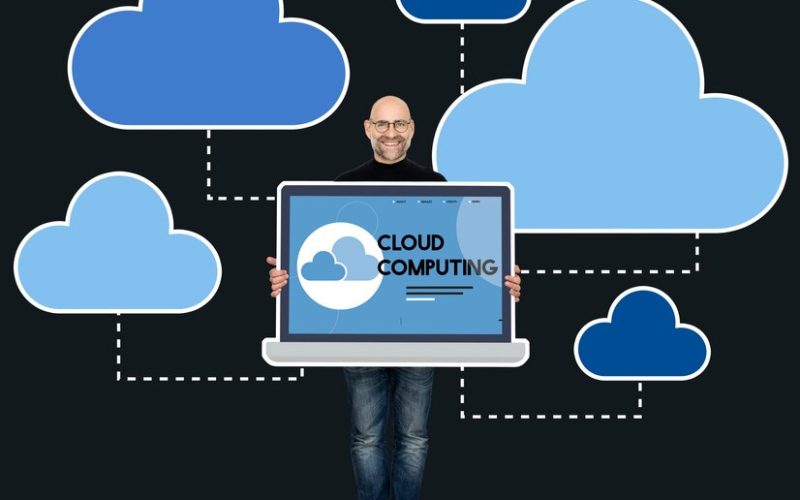Cloud computing has transformed the technological landscape over the past decade, driving innovation and efficiency across industries. In 2024, the significance of cloud computing continues to grow, with businesses increasingly relying on cloud services to enhance operations, reduce costs, and improve agility. Various cloud business models, such as Infrastructure as a Service (IaaS), Platform as a Service (PaaS), Software as a Service (SaaS), and Function as a Service (FaaS), offer diverse solutions tailored to meet specific organizational needs. This article explores the cloud computing business models of 2024, their key features, benefits, challenges, and emerging trends.
1. Definition of Cloud Business Models

Cloud business models refer to the framework through which cloud service providers deliver services to consumers, encompassing the underlying architecture, pricing strategies, and customer engagement methodologies.
Key Components
The essential components of cloud business models include service delivery models, which define the type of service offered; pricing strategies, which dictate how customers are charged; and deployment methods, which determine how services are accessed and managed.
2. Types of Cloud Business Models
IaaS provides virtualized computing resources over the internet. It allows businesses to rent servers, storage, and networking capabilities without investing in physical hardware. IaaS enables scalability and flexibility, making it ideal for dynamic workloads and varying resource demands.
Platform as a Service (PaaS)
PaaS offers a development platform for building, testing, and deploying applications. It provides developers with tools, libraries, and services, streamlining the application development process. PaaS facilitates collaboration among developers and simplifies the deployment of applications.
Software as a Service (SaaS)
SaaS delivers software applications over the internet on a subscription basis. Users can access applications from any device with an internet connection, eliminating the need for installations or updates. SaaS is widely used for collaboration tools, customer relationship management (CRM), and enterprise resource planning (ERP).
Function as a Service (FaaS)
FaaS enables developers to execute code in response to events without managing server infrastructure. It allows for a microservices architecture, where applications are broken down into smaller, manageable functions. FaaS is particularly suitable for serverless computing scenarios, such as data processing and IoT applications.
Hybrid and Multi-Cloud Strategies
Hybrid and multi-cloud strategies combine on-premises infrastructure with public and private cloud services. This approach offers flexibility, allowing businesses to choose the best environment for each workload while avoiding vendor lock-in.
3. Comparative Table of Cloud Business Models
| Model | Definition | Key Features | Use Cases |
|---|---|---|---|
| IaaS | Virtualized computing resources | Scalability, control | Web hosting, data storage |
| PaaS | Development platform | Tools for app development | Application development, testing |
| SaaS | Software delivery over the internet | Accessibility, subscription-based | Collaboration tools, CRM |
| FaaS | Serverless architecture | Event-driven, microservices | IoT applications, data processing |
4. Pricing Models in Cloud Computing
Subscription-Based Pricing
Subscription-based pricing involves charging customers a recurring fee for access to cloud services. This model provides predictability in budgeting and encourages long-term customer relationships. Businesses can choose monthly or annual subscriptions based on their needs.
Pay-as-You-Go Pricing
Pay-as-you-go pricing allows customers to pay only for the resources they use, making it a cost-effective solution for businesses with fluctuating workloads. This model eliminates upfront costs and provides flexibility in resource allocation.
Hybrid Pricing Models
Hybrid pricing models combine subscription and usage-based pricing, allowing customers to choose the best fit for their needs. This approach provides flexibility while ensuring businesses can optimize costs based on their resource usage.
5. Benefits of Cloud Business Models

Cost Efficiency
Cloud business models reduce capital expenditures by eliminating the need for physical infrastructure. Organizations can scale their resources based on demand, leading to significant cost savings.
Scalability and Flexibility
Cloud services enable businesses to scale resources up or down as needed, providing the flexibility to adapt to changing market conditions. This scalability is especially valuable for businesses experiencing rapid growth or seasonal fluctuations.
Rapid Deployment
Cloud services can be deployed quickly, allowing organizations to launch applications and services faster. This speed is crucial in today’s competitive environment, where time-to-market can be a significant advantage.
Global Accessibility
Cloud services are accessible from anywhere with an internet connection, enabling remote work and collaboration across geographical boundaries. This global reach fosters innovation and allows businesses to tap into new markets.
Enhanced Security
Cloud providers invest heavily in security measures to protect customer data. Advanced security features, such as encryption, identity management, and compliance certifications, enhance the overall security posture of cloud services.
6. Challenges and Considerations
Security Concerns
Despite enhanced security measures, data breaches and compliance issues remain significant concerns for organizations utilizing cloud services. Businesses must ensure they implement robust security protocols and adhere to industry regulations.
Dependence on Providers
Organizations may face risks associated with dependency on cloud service providers. Vendor lock-in can limit flexibility and hinder businesses from switching providers or adopting new technologies.
Cost Management Challenges
While cloud services offer cost savings, managing and optimizing cloud costs can be challenging. Organizations must implement effective monitoring and management strategies to avoid unexpected expenses.
Downtime and Reliability Issues
Cloud service outages can disrupt business operations, leading to potential losses. Organizations should assess the reliability of cloud providers and implement contingency plans to mitigate risks.
7. Analysis of Cloud Business Model Trends in 2024
In 2024, several trends are shaping cloud business models. One significant trend is the rise of AI-driven cloud solutions, enabling businesses to leverage artificial intelligence for data analysis, predictive analytics, and automation. Additionally, enhanced security features, such as advanced threat detection and multi-factor authentication, are becoming standard offerings among cloud providers. The growing popularity of edge computing, which processes data closer to the source, is also reshaping cloud business models by addressing latency issues and enhancing performance.
8. Real-World Examples of Cloud Business Models
IaaS Example: Amazon Web Services (AWS)
AWS is a leading IaaS provider, offering a wide range of services, including compute, storage, and networking. AWS allows businesses to scale resources quickly and efficiently, making it a popular choice for startups and enterprises alike.
PaaS Example: Google Cloud Platform (GCP)
Google Cloud Platform provides a robust PaaS environment, offering tools and services for application development, machine learning, and data analytics. GCP enables developers to build and deploy applications rapidly while leveraging Google’s infrastructure.
SaaS Example: Salesforce
Salesforce is a premier SaaS provider, offering a comprehensive CRM platform that enables businesses to manage customer relationships, sales, and marketing efforts. Its subscription-based model provides organizations with access to advanced features without the need for extensive IT resources.
Conclusion
Cloud computing business models play a vital role in shaping the future of technology and business operations. As organizations continue to embrace the cloud in 2024, understanding the various models, their benefits, challenges, and emerging trends will be crucial for success. By leveraging the advantages of cloud services, businesses can drive innovation, enhance efficiency, and remain competitive in an ever-evolving marketplace.












